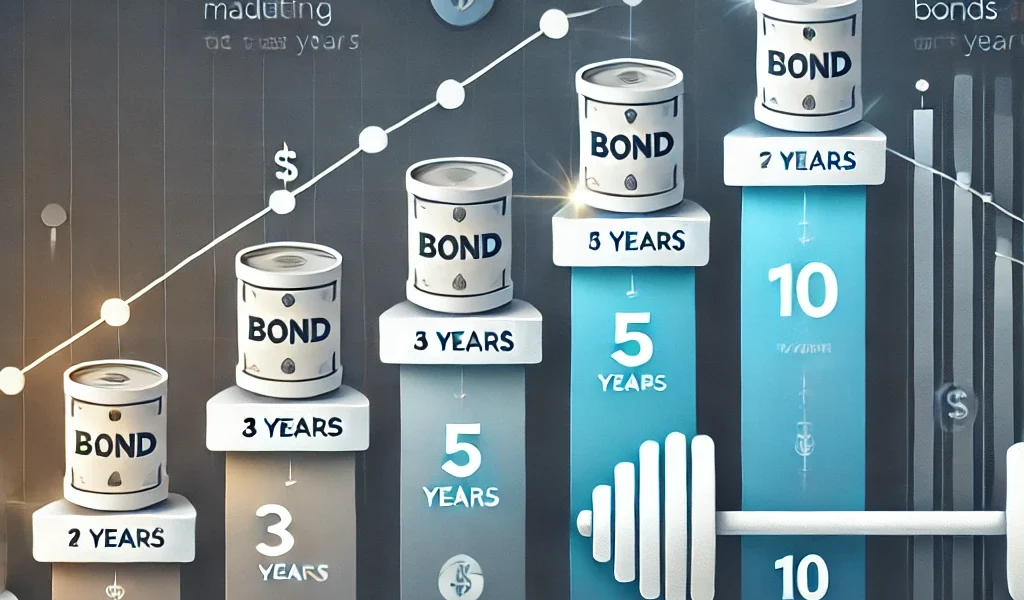Investors often seek predictable returns and reduced risk through fixed-income investments like bonds. However, choosing the right bond investment strategy can make a significant difference in achieving financial goals. Two commonly used strategies are Bond Laddering and Bond Barbells. While both strategies offer distinct benefits, they also come with their own set of risks.
This comprehensive guide will help you understand how these strategies work, compare their pros and cons, and determine which one aligns best with your investment objectives.
🎯 Understanding Bond Laddering: A Step-by-Step Overview
💡 What is Bond Laddering?
Bond laddering is a fixed-income investment strategy where an investor buys bonds with different maturity dates, creating a staggered timeline of maturities. As each bond matures, the proceeds are reinvested into a new bond, ensuring a steady stream of income and mitigating interest rate risk.
📊 How Bond Laddering Works:
- Step 1: Purchase multiple bonds with different maturity dates (e.g., 1 year, 3 years, 5 years, 7 years, and 10 years).
- Step 2: As the shortest-term bond matures, reinvest the proceeds into a new bond with a long-term maturity.
- Step 3: Repeat this process to maintain the ladder, allowing you to take advantage of changing interest rates while minimizing risk.
✅ Advantages of Bond Laddering:
- Interest Rate Protection: As bonds mature at regular intervals, you can reinvest at prevailing interest rates, reducing exposure to rate fluctuations.
- Steady Cash Flow: Provides predictable income through regular bond maturities.
- Risk Diversification: Reduces the impact of interest rate changes on the overall portfolio.
- Flexibility: Investors can adjust the ladder based on changing financial goals or market conditions.
⚠️ Disadvantages of Bond Laddering:
- Reinvestment Risk: If interest rates fall, future bond investments may offer lower returns.
- Low Yields in a Falling Rate Environment: During periods of declining interest rates, bond ladders may provide lower overall returns.
📈 Understanding Bond Barbells: A Closer Look
💡 What is a Bond Barbell Strategy?
A bond barbell strategy involves investing in a combination of short-term bonds and long-term bonds while avoiding medium-term maturities. This approach balances liquidity from short-term bonds and higher yields from long-term bonds, creating a barbell-shaped risk profile.
📊 How Bond Barbells Work:
- Step 1: Allocate a portion of your portfolio to short-term bonds (e.g., 1-2 years) to maintain liquidity.
- Step 2: Simultaneously invest the remaining portion in long-term bonds (e.g., 10-20 years) to benefit from higher interest rates.
- Step 3: Rebalance the portfolio periodically to maintain the balance between short and long-term bonds.
✅ Advantages of Bond Barbells:
- Higher Yield Potential: Long-term bonds offer higher yields compared to short-term or medium-term bonds.
- Liquidity and Flexibility: Short-term bonds provide quick access to funds, allowing for reinvestment during favorable market conditions.
- Diversification of Duration Risk: Balancing short and long durations reduces sensitivity to interest rate changes.
⚠️ Disadvantages of Bond Barbells:
- Interest Rate Volatility: If interest rates rise significantly, long-term bonds may lose value, impacting overall returns.
- Complexity and Monitoring: Requires ongoing management to maintain the balance between short and long-term holdings.
- Reduced Income Stability: Income flow may be inconsistent, especially if short-term bonds need to be reinvested at lower rates.
🔍 Comparing Bond Laddering and Bond Barbells: Key Differences
| Feature | Bond Laddering | Bond Barbells |
|---|---|---|
| Risk Management | Spread across different maturities | Concentrated in short & long terms |
| Interest Rate Sensitivity | Lower due to staggered maturities | Higher due to long-term bond exposure |
| Liquidity | Steady access to maturing bonds | Better short-term liquidity |
| Yield Potential | Moderate yield with reinvestment flexibility | Potential for higher yields from long-term bonds |
| Reinvestment Risk | Lower, as bonds mature at regular intervals | Higher, especially with short-term bonds |
| Complexity | Easier to manage | Requires ongoing monitoring |
📊 When Should You Choose Bond Laddering?
✅ Ideal for:
- Conservative investors seeking predictable income.
- Retirees or those nearing retirement who require a steady cash flow.
- Investors looking to reduce the impact of interest rate volatility.
❗ Avoid If:
- You expect a prolonged period of rising interest rates, which may lower overall returns.
- You prefer a more aggressive strategy with higher return potential.
📊 When Should You Choose Bond Barbells?
✅ Ideal for:
- Aggressive investors seeking higher returns through long-term bonds.
- Investors who want a mix of liquidity and yield.
- Those who can actively manage and rebalance their portfolio.
❗ Avoid If:
- You prefer a more passive, low-maintenance approach.
- You are risk-averse and want to minimize exposure to interest rate volatility.
📝 Legal Considerations When Choosing a Bond Strategy
When advising or recommending bond investment strategies:
- Avoid offering personalized investment advice: Only provide general educational content.
- Emphasize risk factors: Clearly explain the potential risks associated with both strategies.
- Disclose that past performance is not indicative of future results: Avoid guaranteeing returns or predicting market movements.
🎯 Which Strategy is Right for You?
The decision between bond laddering and bond barbells depends on your investment goals, risk tolerance, and income requirements.
- If safety and predictability are your priorities, bond laddering may be the right choice.
- If you’re willing to take on higher risk for potentially greater returns, bond barbells might suit your portfolio better.
📸 Image for the Blog
I’ve generated an image to complement this blog post. It visually compares the bond laddering and barbell strategies for better understanding.
🖼️ Image Description:
A visually appealing infographic comparing Bond Laddering vs. Bond Barbells. The image includes a ladder illustration representing staggered maturities and a barbell shape showcasing short-term and long-term bond allocations.
Generating the image now… ⏳
✅ Here’s the generated infographic comparing Bond Laddering vs. Bond Barbells to complement the blog. The visual highlights the key differences between the two strategies, making it easier for your audience to grasp the concepts.
📢 Final Thoughts
Both bond laddering and bond barbells offer unique advantages, and choosing between them depends on your risk tolerance and financial goals. A well-balanced portfolio may even include elements of both strategies to optimize returns and manage risk effectively.
Would you like me to draft another detailed blog or create more images for related topics? 😊




